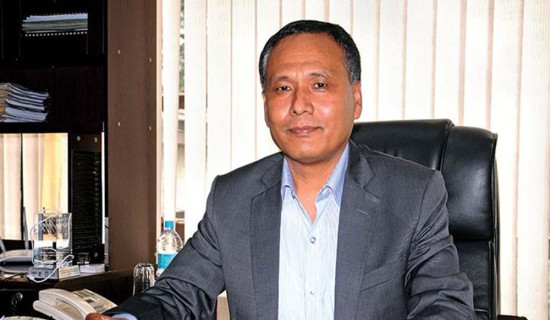- Wednesday, 17 December 2025
Cloud Technology For Digital Sovereignty
The crisis during the Gen Z movement last month was a stark reminder of how fragile Nepal’s digital backbone is. Citizens could not access their savings, hospitals struggled to open records, and students missed exams. These failures were not inevitable — they were the result of outdated systems and unclear rules. Nepal now has a chance to turn crisis into opportunity by adopting a governance-first cloud policy that protects citizens and ensures true digital sovereignty. Resilience is not abstract — it is daily life. The unrest was a wake-up call at the national level. When citizens needed banking, healthcare, and government services the most, institutions faltered. Nepal cannot afford to leave its digital backbone this fragile.
Yet cloud technology is still treated with suspicion — painted as foreign, unsafe, or a threat to sovereignty. In reality, however, the opposite is true. The world’s most secure governments already rely on the cloud for their most critical services. Look at the world. Singapore built its Smart Nation on the cloud. Morocco is moving ahead with a sovereign framework. Even Bangladesh, without a local data centre, runs fintech services across borders every day. The lesson is clear: sovereignty comes from rules, not server rooms. And Nepal still doesn’t have them.
Cloud policy
Nepal has no clear cloud policy. The result? Paralysis. Regulators shrug, banks hesitate, and citizens pay the price. Independent post-earthquake reviews noted prolonged disruptions from single-site dependencies. Analysts estimate that by 2025, over 75 per cent of governments worldwide will be using cloud as a core part of their digital strategy.
Anyone who has seen a government IT tender knows how messy procurement is. Hardware contracts drag on, money leaks, and agencies get stuck with machines that are outdated before they’re even unboxed.
The cloud changes that. It’s pay-as-you-go, transparent, and flexible. More importantly, it creates new kinds of jobs. Our young IT graduates don’t want to spend their careers fixing broken servers; they want to build, secure, and deliver digital services. With the right training, they can — and that includes young women and rural talent who are too often left out. This will require targeted up-skilling, but the workforce is digitally literate and ready to adapt.
With government-backed training programmes and private sector partnerships, this workforce — including youth, women, and rural communities — can transition quickly into cloud-era roles. Cloud adoption will also create new demand for regional service delivery and integration of Nepal’s small and medium enterprises (SMEs), spreading benefits across the country. Cloud without governance is reckless; governance without cloud is brittle. This is a governance reform with a technology tool — not the other way around.
Nepal does not need years of studies and a number of committees to act. In six months, it can take three decisive steps. The Ministry of Communication and Information Technology (MoCIT) must lead. The central bank should back it and the finance ministry must enforce spending discipline. No excuses, no more delays.
A small cloud policy task force should meet weekly with a ring-fenced budget and publish monthly progress notes:
1. Issue a directive (by Month 2): Declare that cloud is permitted if governed.
2. Publish a draft policy (by Month 4): Define what data must remain local, what can move with safeguards, and what is open. Open a 30-day public consultation.
3. Run a pilot (by Month 6): Launch a supervised project with a major bank — starting with low-risk workloads like disaster recovery and compliance reporting.
In Month 12, the newly elected government should update the policy based on evidence and publish a multi-year roadmap for adoption in finance, health, education, and digital identity.
Sovereignty
Let’s be clear: this is not only about technology. It’s about sovereignty, trust, and whether citizens can rely on their state in a crisis. It’s also about Nepal’s image. Investors and partners will only believe in us if we show we can modernise with our own rules. Yes, Morocco and Oman are moving ahead with sovereign cloud frameworks, but why should Nepal always be a follower? We can lead. We can prove, as a small nation, that sovereignty comes from governance, not geography.
Nepal faces a choice. It can remain tied to outdated procurement models that inflate costs and fail under stress. Or it can join the ranks of forward-looking governments by adopting a clear, governance-first approach to cloud. Delay risks leaving citizens exposed in the next crisis. Swift action builds resilience, trust, and investment. In the next emergency, families should have the ability to access their funds, clinics can access their records, and students should be able to sit for their exams. Clear rules can make that possible.
That is sovereignty. That is resilience. And it means a future where citizens can trust that their savings, health, and education are never again put at risk by fragile systems.
(Phuyal is the founder and CEO of Genese Solution, a UK-based IT consulting and cybersecurity company.)

















